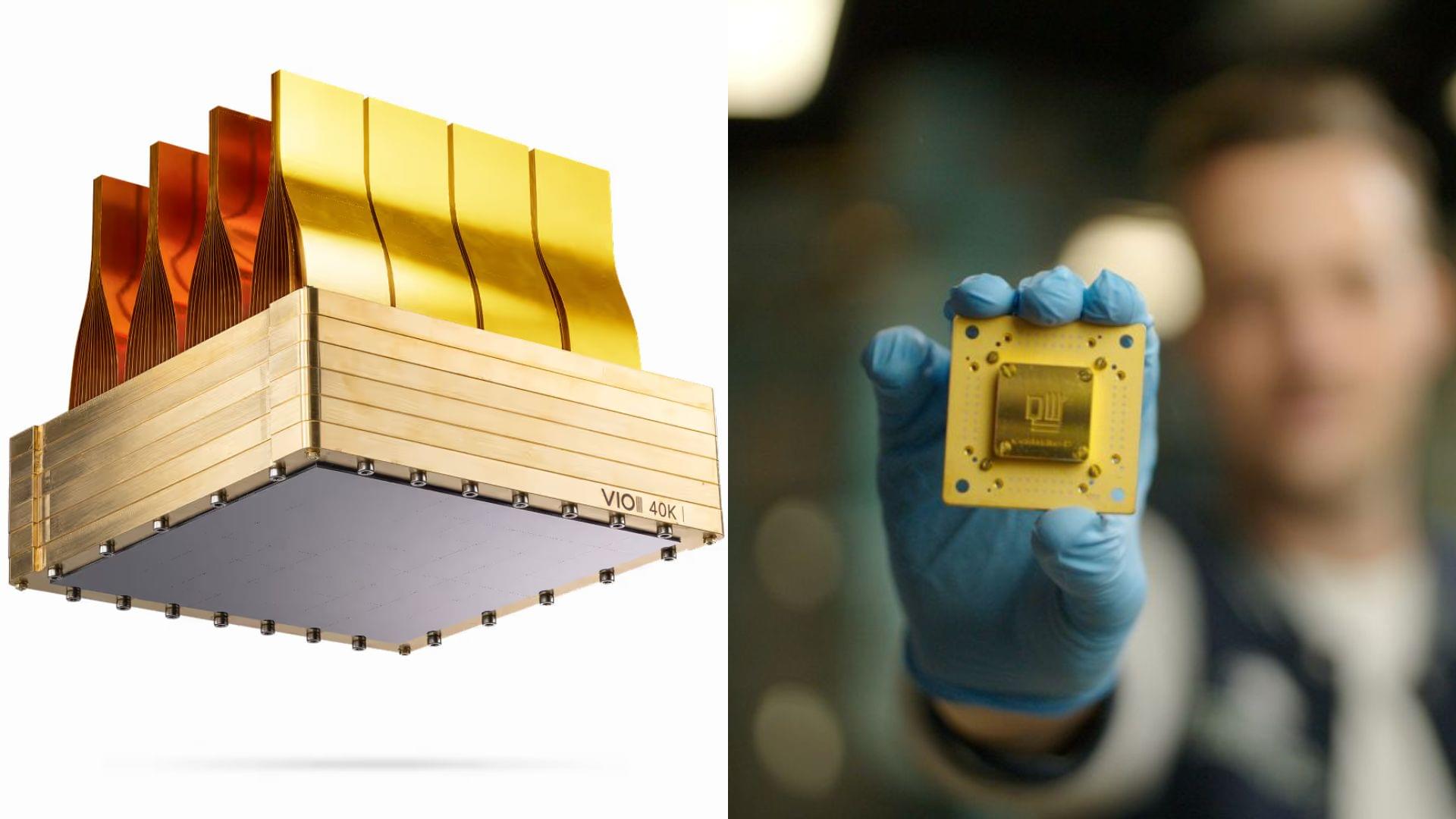QuantWare’s latest processor design delivers 10K qubits in a compact footprint, breaking industry bottlenecks.




Researchers at HZDR have partnered with the Norwegian University of Science and Technology in Trondheim, and the Institute of Nuclear Physics in the Polish Academy of Sciences to develop a method that facilitates the manufacture of particularly efficient magnetic nanomaterials in a relatively simple process based on inexpensive raw materials.
Using a highly focused ion beam, they imprint magnetic nanostrips consisting of tiny, vertically aligned nanomagnets onto the materials. As the researchers have reported in the journal Advanced Functional Materials, this geometry makes the material highly sensitive to external magnetic fields and current pulses.
Nanomagnets play a key role in modern information technologies. They facilitate fast data storage, precise magnetic sensors, novel developments in spintronics, and, in the future, quantum computing. The foundations of all these applications are functional materials with particular magnetic structures that can be customized on the nanoscale and precisely controlled.

Scientists from the Indian Institute of Technology Bombay have found a way to use light to control and read tiny quantum states inside atom-thin materials. The simple technique could pave the way for computers that are dramatically faster and consume far less power than today’s electronics.
The materials studied are just one atom thick—far thinner than a human hair—and are known as two-dimensional (2D) semiconductors. Inside these materials, electrons can sit in one of two distinct quantum states, called valleys. These valleys, named K and K′, can be thought of as two different “locations” that an electron can choose between. Because there are two options, researchers have long imagined using them like the 0 and 1 of digital computing, but on a quantum level. This idea is the foundation of a rapidly growing research field called valleytronics.
However, being able to reliably control which valley electrons occupy—and to switch between them quickly and on demand—has been a major challenge. “Previous methods required complicated experimental setups with carefully tuned circularly polarized lasers and often multiple laser pulses, and they only worked under specific conditions,” said Prof. Gopal Dixit.

Diamond is famous in material science for being the best natural heat conductor on Earth—but new research reveals that, at the atomic scale, it can briefly trap heat in unexpected ways. The findings could influence how scientists design diamond-based quantum technologies, including ultra-precise sensors and future quantum computers.
In a study published in Physical Review Letters, researchers from the University of Warwick and collaborators showed that when certain molecular-scale defects in diamond are excited with light, they create tiny, short-lived “hot spots” that momentarily distort the surrounding crystal. These distortions last only a few trillionths of a second but are long enough to affect the behavior of quantum-relevant defects.
“Finding a hot ground state for a molecular-scale defect in diamond was extremely surprising for us,” explained Professor James Lloyd-Hughes, Department of Physics, University of Warwick. “Diamond is the best thermal conductor, so one would expect energy transport to prevent any such effect. However, at the nanoscale, some phonons—packets of vibrational energy—hang around near the defect, creating a miniature hot environment that pushes on the defect itself.”

A researcher at the Department of Physics at Tohoku University has uncovered a surprising quantum phenomenon hidden inside ordinary crystals: the strength of interactions between electrons and lattice vibrations—known as phonons—is not continuous, but quantized. Even more remarkably, this strength is universally linked to one of the most iconic numbers in physics: the fine-structure constant.
What makes this dimensionless number (α ≈ 1/137) so iconic is its ability to explain electromagnetic interactions, independent of the units used. Imagine it like a ratio where one pencil is twice as long as another pencil—this ratio won’t change no matter whether you measure the pencil length in cm, inches, or feet.

I personally don’t believe that our universe will end because the universe has access to the quantum realm which can rebirth particles into existence but I still think the universe can be saved from entropy by mastering universe control with kardeshev type 5 civilization technology or type infinity civilization technology. Think even stars can become immortal essentially if we can recharge them which I believe that universes can become immortal essentially aswell but would require massive amounts of energy and control of their particles with a possible holographic magnonics essentially patching areas or rebirthing areas.
Brooklyn is not expanding.
Go to https://ground.news/sabine to get 40% off the Vantage plan and see through sensationalized reporting. Stay fully informed on events around the world with Ground News.
In quantum physics, a wave function is a mathematical way to describe everything in the universe. But since quantum physics emerged, physicists have argued about whether or not the wave function is real. A group of physicists recently conducted a test of a theorem that describes the mechanics of the wave function, and they’ve told the press that they’ve settled the question: Yes, the wave-function is real. Let’s take a look.
Paper: https://arxiv.org/abs/2510.
👕T-shirts, mugs, posters and more: ➜ https://sabines-store.dashery.com/
💌 Support me on Donorbox ➜ https://donorbox.org/swtg.
👉 Transcript with links to references on Patreon ➜ / sabine.
📝 Transcripts and written news on Substack ➜ https://sciencewtg.substack.com/
📩 Free weekly science newsletter ➜ https://sabinehossenfelder.com/newsle… Audio only podcast ➜ https://open.spotify.com/show/0MkNfXl… 🔗 Join this channel to get access to perks ➜ / @sabinehossenfelder 📚 Buy my book ➜ https://amzn.to/3HSAWJW #science #sciencenews #quantum #physics.
👂 Audio only podcast ➜ https://open.spotify.com/show/0MkNfXl…
🔗 Join this channel to get access to perks ➜
/ @sabinehossenfelder.
📚 Buy my book ➜ https://amzn.to/3HSAWJW
#science #sciencenews #quantum #physics

Reliably quantifying and characterizing the quantum states of various systems is highly advantageous for both quantum physics research and the development of quantum technologies. Quantifying these states typically entails performing several measurements and reconstructing them via a process known as quantum-state tomography.